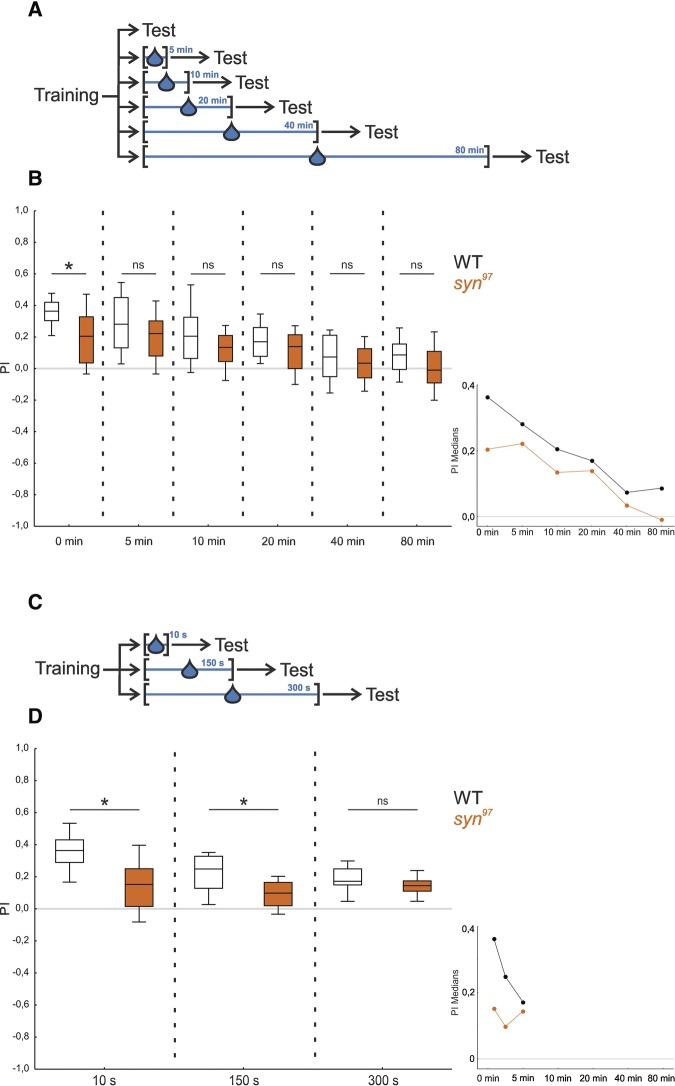Figure 4.
syn97 mutants are selectively impaired in short-term memory. To investigate memory over time, the syn97 mutant and the wild-type WT were tested at different time points after training. (A) The wild-type WT strain and the syn97 mutant strain were tested at one of six different time points after training. During the time interval between training and test the larvae were placed into a drop of water in all cases, except in the case when the larvae were tested immediately after training (0 min). (B) Only immediately after training (test at 0 min) lower associative memory scores for the syn97 mutant than the wild-type WT were found, while for all later testing time points no difference in memory scores was observed (inset, showing the median PIs plotted across time intervals). All displayed data were gathered in parallel. The underlying PREF scores are documented in Supplemental Figure S5A. (*) indicates P < 0.05/6, and ns indicates P > 0.05/6 in MWU tests. Other details as in Figure 2. (C) The experiment was repeated such that all experimental groups were placed into a water droplet, and only the duration of the retention period was varied. (D) Both at 10 sec and at 150 sec after training the syn97 mutant larvae showed an impairment in memory that was gone after 300 sec/5 min (inset, showing the median PIs plotted across time intervals). Therefore, the decrease in memory early after training is related to a time-dependent process. All displayed data were gathered in parallel. The underlying PREF scores are documented in Supplemental Figure S5B. (*) indicates P < 0.05/3, and ns indicates P > 0.05/3 in MWU tests. Other details as in Figure 2.

